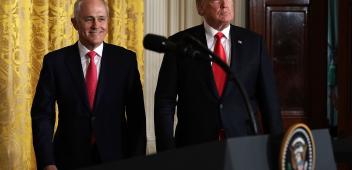If money is practically free, why is nobody investing it?
Negative interest rates won’t help when it is clear that there are other reasons entrepreneurs have lost their mojo. Originally published in The Australian Financial Review.

Paul Samuelson, the doyen of economic textbook authors, said that if inflation-adjusted interest rates were zero and expected to remain so, it would be profitable to flatten the Rocky Mountains in order to lower transport costs.
The US has had negative real rates for the entire period since the 2008 financial crisis. The Federal Reserve chairman has promised that this will continue for the foreseeable future. Yet the Rockies remain untouched. What has happened?
Academically inclined economists argue that the global savings/investment balance has forced interest rates down to zero. Monetary policy would normally apply stimulus by reducing interest rates even further, but has come up against the “zero lower band” – interest rates can’t go much below zero in nominal terms.
This has led the Fed and other central banks to search for influence by implementing unconventional monetary policy: quantitative easing and “forward guidance”.
Those who advocate still-easier monetary policy call for central banks to break through the zero lower bound.
A few central banks have ventured 1 per cent or so below zero, but much more than this is difficult because it would encourage bank depositors to shift into cash to avoid a negative return on their funds.
But maybe this narrative, with the global saving/investment balance playing the key role, doesn’t fit the post-global financial crisis decade well.
This explanation might have made some sense when Ben Bernanke, then on the Fed board but not yet chairman, wrote about the China “savings glut” in 2005.
If the price of money is out of equilibrium, the whole economy is distorted.
China was running current account surpluses that peaked at 10 per cent of its GDP, and these surpluses were being invested in US government securities.
But China’s external surplus fell dramatically after the GFC, so that by 2018 it was less than 1 per cent of GDP. And yet bond yields fell even further. Thus, something else was needed to explain the low interest rates.
In practice, interest rates are set in financial markets, not by the global savings/investment balance. Interest rates are at zero because the Fed has set them there.
Current rates reflect the long period of vigorous Fed unconventional monetary policy, which has kept rates down, rather than the global savings/investment balance.
The real puzzle is the one posed by Samuelson. Company profits have been historically high, creating a huge gap between market interest rates and return to shareholders. Why don’t they invest?
There must be many investment projects more profitable than flattening the Rockies. Entrepreneurs have lost their mojo.
Should the RBA go negative?
So, should the Reserve Bank of Australia now follow the Europeans into negative interest-rate territory?
Clearly not in the hope that this would stimulate investment. Whatever is holding back investment, it is not a shortage of cheap funding.
Lower interest rates might keep the exchange rate down, and if US interest rates go into negative territory, the RBA might be justified in matching this to maintain international competitiveness.
But sustained negative real interest rates make no sense.
The interest rate is the price of something that is valuable: the opportunity to borrow, invest, and make a profit. A dollar today is more valuable than a dollar in a decade. The interest rate is the key price in any project appraisal. If the project can’t promise a positive return to both the entrepreneur and the funder, then the project should not go ahead.
Interest rates are the key price that ensures that zombie firms will go out of business and new investments will be beneficial to society.
Interest rates feed into asset prices, house-purchase decisions, pensioners’ incomes and just about every financial decision. If this price is out of equilibrium, the whole economy is distorted.



